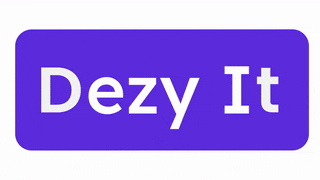The Economics of AI Adoption for Small Clinics: Is It Worth It?
- sia699
- Mar 23
- 2 min read

AI is transforming healthcare, but is it a cost-effective solution for small clinics in the UK? While large hospitals can afford advanced AI tools, smaller practices often struggle with budget constraints and resource limitations.
With AI promising reduced admin costs, improved efficiency, and better patient outcomes, the question remains: Does AI adoption make financial sense for small clinics?
1. The Cost of AI Implementation in Small Clinics
AI adoption involves both upfront and ongoing costs, including:
Software licensing fees for AI-powered scheduling, billing, or diagnostic tools.
Hardware upgrades (e.g., faster servers, cloud storage).
Staff training to integrate AI into daily operations.
Maintenance and compliance costs for regulatory adherence (NHS Digital, GDPR).
According to a 2024 UK HealthTech investment report, AI-powered administrative tools cost between £5,000 and £50,000 annually, depending on clinic size and complexity. However, many AI providers now offer subscription-based models, making adoption more accessible.
2. AI’s Impact on Cost Reduction and Efficiency
AI can offset its costs by reducing operational inefficiencies. Key benefits include:
30-50% reduction in admin workload, allowing staff to focus on patient care.
Automated appointment scheduling, decreasing no-shows by up to 40%.
AI-powered billing systems minimising claim errors and speeding up payments.
Automated medical scribing, cutting down documentation time by 2-3 hours per day per doctor.
These efficiency gains help clinics reduce staff costs, minimise revenue leakage, and improve cash flow.
3. ROI: When Does AI Pay for Itself?
The return on investment (ROI) depends on how AI is utilised. A 2023 UK study found that clinics implementing AI-powered patient triage and admin automation saw a 20-35% increase in profitability within the first 18 months.
AI adoption in:
Billing automation can save £20,000+ annually by preventing claim denials.
AI-powered virtual assistants reduce receptionist workload by 50%, saving up to £25,000 per year.
Predictive analytics help clinics optimise resource allocation, lowering wasteful expenditures.
With these savings, AI can pay for itself within 1-3 years, depending on clinic size.
4. Challenges of AI Adoption for Small Clinics
Despite the benefits, small clinics face hurdles such as:
High initial investment, even with cost-effective AI tools.
Staff resistance to AI, fearing job displacement.
Cybersecurity risks, requiring strong data protection strategies.
Regulatory compliance, especially under NHS data guidelines and GDPR.
However, government grants and AI-as-a-Service models are helping small clinics overcome financial and technical barriers.
5. Is AI Worth It for Small Clinics?
AI adoption is no longer a luxury but a competitive necessity. While upfront costs exist, the long-term benefits—cost savings, efficiency, and patient satisfaction—outweigh the risks.
For small UK clinics, starting with low-cost AI tools for admin automation, billing, and virtual assistants can deliver immediate financial benefits, ensuring AI adoption is a smart, profitable move.
Learn More:


Comments